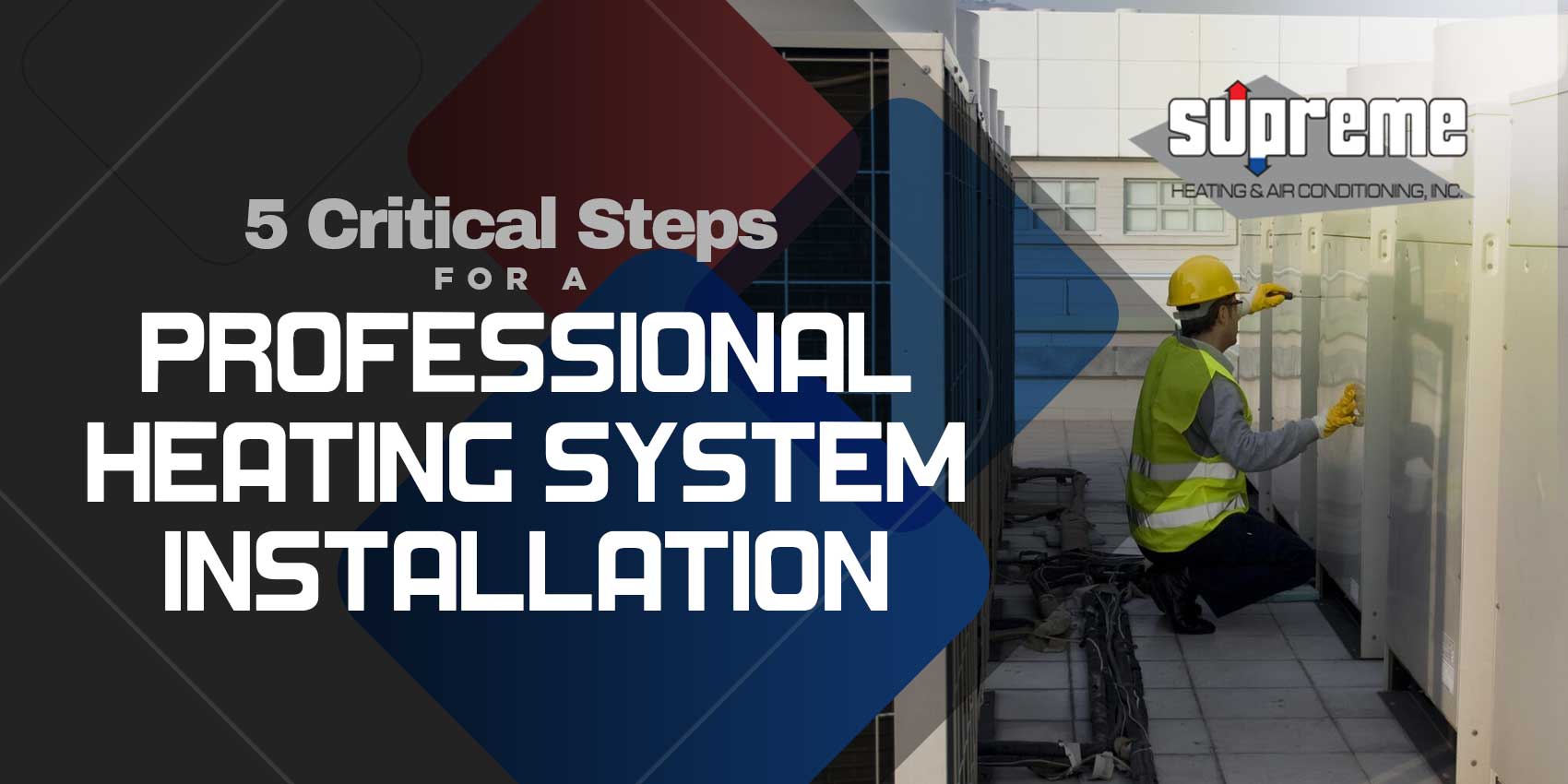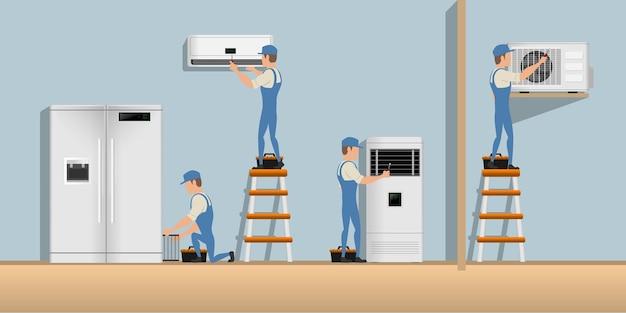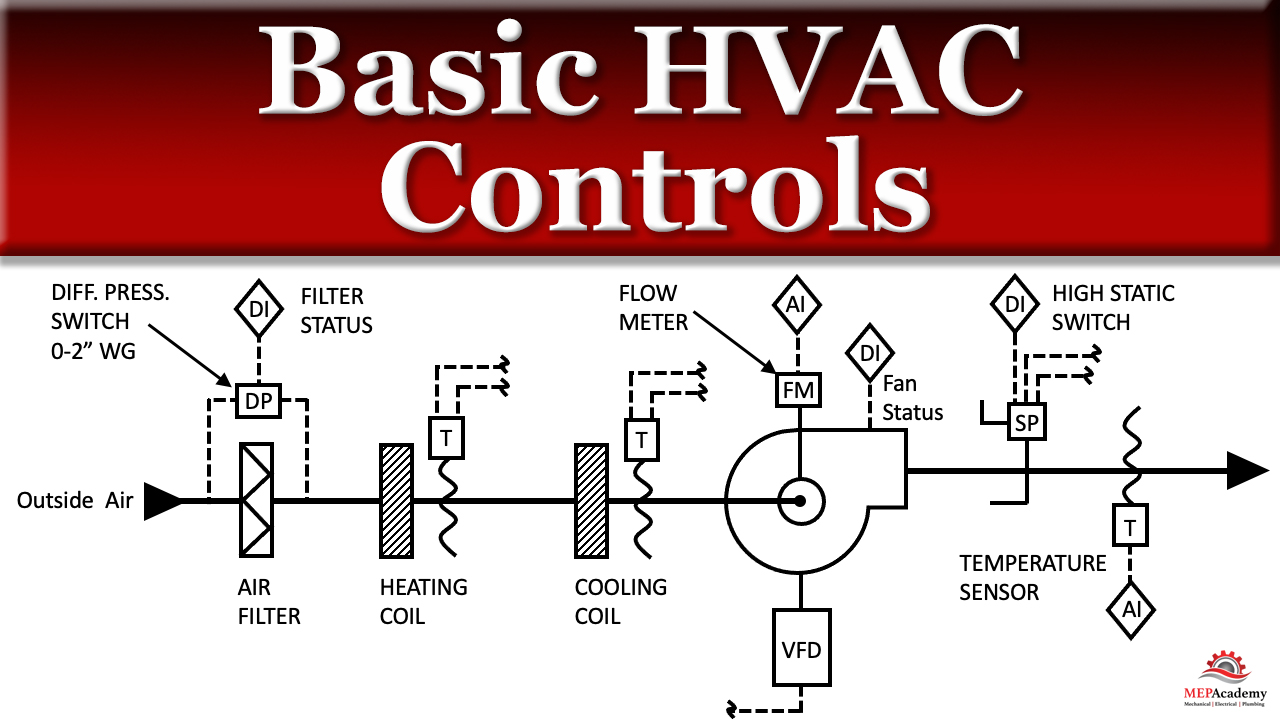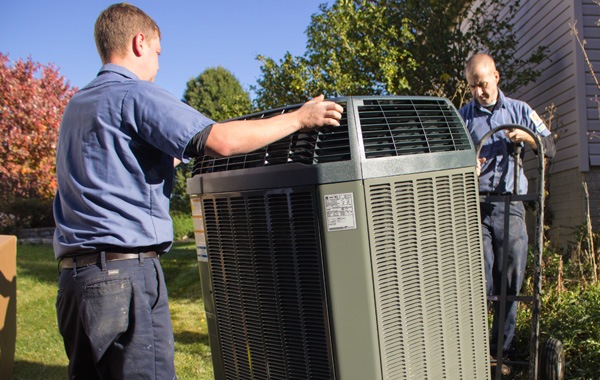In “5 Essential Steps in HVAC Installation,” you’ll discover the key components to a successful HVAC installation process. From initial planning and layout design to equipment selection and system testing, this article will provide you with the essential knowledge you need to ensure a smooth and efficient HVAC installation. Whether you’re a homeowner looking to upgrade your current system or a contractor seeking to improve your installation skills, these five steps will guide you through the entire process. With the expertise of Diamond Air Design, a reputable HVAC repair company in Pensacola FL, this article will equip you with the necessary information to tackle any HVAC installation project confidently.

This image is property of supremehvac.com.
Step 1: Design and Planning
When it comes to HVAC installation, design and planning are crucial to ensure a successful and efficient system. The first step is assessing the HVAC requirements. This involves evaluating the size of the space, its insulation, and the specific heating and cooling needs. By understanding these requirements, you can determine the appropriate capacity for the HVAC system.
Next, calculating the heating and cooling load is necessary. This involves determining the amount of heating or cooling required to maintain a comfortable indoor temperature. Factors such as the climate, number of occupants, and heat-generating appliances need to be taken into account.
With the HVAC requirements and load calculations in mind, it’s time to design the system layout. This entails determining the ideal positioning of the main HVAC unit, ductwork, and ventilation components. Proper spatial planning ensures efficient airflow and distribution of conditioned air throughout the space.
Lastly, determining the equipment and materials needed is essential. This involves selecting the appropriate HVAC unit based on the calculated load, as well as choosing the necessary ductwork, controls, and ventilation components. It’s important to consider factors such as energy efficiency, noise levels, and budget when making these decisions.
Step 2: Pre-Installation Preparations
Before starting the HVAC installation process, several preparatory steps need to be taken. First and foremost, obtaining necessary permits and approvals is crucial to comply with local building codes and regulations. This ensures that the installation meets safety standards and avoids any legal issues.
Preparing the work area is another important step. This involves clearing the space and ensuring that it is ready for the HVAC installation. Removing any obstructions and clutter not only facilitates the installation process but also allows for a safer and more efficient work environment.
Proper ventilation and safety measures should also be considered during pre-installation preparations. Adequate ventilation helps improve air quality during the installation process, protecting both the HVAC technicians and the occupants of the building. Safety measures such as wearing appropriate protective gear and adhering to industry guidelines should be followed to minimize risk.
Additionally, ordering equipment and materials should be done in advance to avoid any delays during the installation process. Ordering in a timely manner ensures that all necessary components are available when needed, preventing any unnecessary setbacks or interruptions.
Step 3: HVAC System Installation
With the pre-installation preparations complete, it’s time to proceed with the HVAC system installation. The first task is installing the main HVAC unit. This involves placing and securing the unit according to the design and layout previously determined. Proper installation of the unit ensures optimal performance and longevity.
Setting up the ductwork system is the next step in the installation process. This entails connecting and securing the ducts to ensure proper airflow throughout the space. Attention should be given to avoid any kinks, bends, or obstructions in the ductwork that could hinder air distribution.
Once the ductwork is in place, it is important to connect the electrical wiring and controls. This step ensures that the HVAC system can be operated and controlled effectively. Proper electrical connections guarantee the safe and reliable functioning of the system.
Installation of the ventilation components is the final task in this step. This includes placing and securing vents, grilles, and diffusers to enable the proper intake and distribution of fresh air. Installing these components in strategic locations allows for efficient air circulation and ensures comfortable indoor air quality.
Step 4: Testing and Inspections
After the HVAC system installation is complete, thorough testing and inspections are necessary to ensure its proper functioning. Conducting a pressure test on the ductwork is crucial to identify any leaks or inefficiencies. This test involves pressurizing the ductwork and monitoring for any drops in pressure, which could indicate leaks.
Checking for leaks and air balance is another important step. This involves inspecting the entire system for any air leaks, which can compromise the system’s efficiency. Proper air balancing ensures that conditioned air is evenly distributed throughout the space, avoiding any hot or cold spots.
Verifying proper electrical connections is also essential. This step ensures that all electrical circuits are correctly wired and connected, minimizing the risk of electrical malfunctions or hazards. Thoroughly checking the electrical connections guarantees the safe operation of the HVAC system.
Finally, conducting performance tests is crucial to assess the efficiency and effectiveness of the HVAC system. These tests involve measuring factors such as airflow, temperature differentials, and energy consumption. Performance tests help identify any potential issues and allow for necessary adjustments or fine-tuning.

This image is property of a-plusquality.ca.
Step 5: Finalizing and Commissioning
The final step in the HVAC installation process involves finalizing and commissioning the system. This includes completing any necessary adjustments or fine-tuning based on the results of the performance tests. Addressing any identified issues ensures optimal system performance and efficiency.
Programming the thermostat and controls is another crucial aspect of the finalization process. Setting the appropriate temperature controls and schedules helps optimize energy usage and ensures occupant comfort. Providing clear instructions and guidelines for using the thermostat and controls is important for the system’s efficient operation.
To ensure that users can properly operate and maintain the HVAC system, providing user manuals and maintenance guidelines is essential. These resources offer valuable information on routine maintenance tasks, troubleshooting common issues, and maximizing the lifespan of the equipment. User manuals and maintenance guidelines help users avoid potential problems and minimize the need for costly repairs.
Obtaining final inspections and approvals from the relevant authorities is the last step in the HVAC installation process. These inspections ensure that the installation meets all safety and code requirements. Final approvals provide peace of mind and officially certify the system’s compliance with industry standards.
Additional Considerations for HVAC Installation
Understanding local building codes and regulations is crucial when undergoing HVAC installation. Each jurisdiction may have specific requirements that need to be followed. Familiarizing yourself with these regulations ensures that your installation meets all necessary standards, avoiding any potential legal issues.
Choosing energy-efficient equipment is another key consideration. Energy-efficient HVAC systems not only provide cost savings in the long run but also contribute to reducing carbon emissions. Look for systems with high Seasonal Energy Efficiency Ratio (SEER) ratings and Energy Star certifications to ensure optimal energy efficiency.
Considering future maintenance and repairs is important when selecting HVAC equipment. Opting for systems with readily available parts and easy access for repairs can save time and money in the future. Additionally, choosing a reputable manufacturer with a good track record for reliability and customer support can provide peace of mind.
Hiring a professional HVAC contractor is highly recommended for HVAC installation. Professional contractors have the knowledge, expertise, and experience to design and install HVAC systems correctly. They ensure that the installation is done safely and in compliance with regulations, minimizing the risk of potential issues or failures.

This image is property of oatuu.org.
Benefits of Professional HVAC Installation
Optimal system performance and energy efficiency are major benefits of professional HVAC installation. Professionals have the expertise to properly size the system, optimize airflow, and ensure all components are installed correctly. This results in a system that operates efficiently, saving energy and reducing utility costs.
Ensuring proper safety and ventilation is another advantage of professional HVAC installation. Professionals understand the importance of adequate ventilation, which promotes healthy indoor air quality and prevents the buildup of harmful pollutants. They also adhere to safety protocols during installation, minimizing any potential risks.
A longer lifespan of equipment is another benefit of professional installation. When installed correctly, HVAC equipment is less prone to breakdowns and premature wear and tear. Professionals ensure that all components are properly connected and that the system is operating within the manufacturer’s specifications, maximizing its lifespan.
Warranty coverage and support are additional advantages of professional HVAC installation. Most manufacturers offer warranties for their equipment, but these warranties often require professional installation for them to be valid. Professional installation ensures that any potential warranty claims are not voided and that support is readily available if needed.
Common Mistakes to Avoid during HVAC Installation
Incorrect sizing of the HVAC system is a common mistake that can lead to performance issues and energy inefficiency. Undersized systems may struggle to adequately heat or cool the space, resulting in discomfort and high energy bills. Oversized systems, on the other hand, can lead to short cycling and increased wear and tear on the equipment.
Improper installation of ductwork is another common mistake to avoid. Leaky ducts can lead to air loss and uneven distribution of conditioned air. Proper installation techniques, including sealing seams and connections, are crucial to ensure efficient operation and optimal airflow.
Neglecting proper insulation and sealing is a mistake that can result in energy loss and reduced system efficiency. Insulation helps prevent heat transfer, keeping conditioned air inside the ducts and minimizing energy waste. Sealing any gaps or leaks in the ductwork prevents air leakage, improving system performance and reducing energy consumption.
Skipping necessary inspections and tests is a mistake that can lead to undetected issues and reduced system performance. Thorough testing and inspections help identify any problems or deficiencies that need to be addressed before the system is finalized. Neglecting these steps can result in compromised performance and potentially costly repairs in the future.

This image is property of mepacademy.com.
Cost Factors to Consider in HVAC Installation
Several cost factors need to be considered when planning for HVAC installation. The size and complexity of the HVAC system play a significant role in determining the overall cost. Larger spaces or those with specific requirements may require more equipment and labor, resulting in higher installation charges.
The quality and efficiency of the equipment also affect the cost of installation. Higher-quality, energy-efficient systems may have a higher upfront cost but can provide long-term savings in energy bills. It’s important to find a balance between upfront cost and long-term savings to make an informed decision.
Labor and installation charges should be factored into the overall cost. Hiring a professional HVAC contractor typically incurs labor charges, which may vary depending on the complexity of the installation and the contractor’s expertise. Obtaining quotes from multiple contractors can help determine the most cost-effective option.
Additional components or upgrades may also contribute to the overall cost. Some installations may require additional components such as zoning systems, humidity controls, or air purifiers. While these additions can improve comfort and indoor air quality, they may increase the overall cost of the installation.
Maintenance Tips for HVAC Systems
Regular maintenance is essential for ensuring the longevity and efficient operation of HVAC systems. Here are some key maintenance tips to keep in mind:
Regularly clean and replace air filters: Clogged filters can hinder proper airflow and strain the system. Cleaning or replacing filters every one to three months improves system efficiency and indoor air quality.
Schedule professional maintenance annually: Hiring a professional HVAC technician for an annual maintenance checkup is recommended. They can inspect, clean, and fine-tune the system, ensuring optimal performance and identifying any potential issues before they become major problems.
Keep outdoor units free from debris: Regularly remove any leaves, twigs, or debris around the outdoor HVAC unit. This allows for proper airflow and prevents damage to the unit.
Monitor and adjust thermostat settings: Avoid setting the thermostat too low in the summer or too high in the winter. Adjusting the temperature settings to a comfortable yet energy-efficient range helps optimize system performance and reduce energy consumption.
By following these maintenance tips, you can prolong the lifespan of your HVAC system and ensure it continues to operate efficiently.
In conclusion, HVAC installation involves several essential steps, starting with design and planning and concluding with finalization and commissioning. Pre-installation preparations, the actual installation process, testing and inspections, and final adjustments are all crucial for a successful installation. Understanding additional considerations, benefits of professional installation, common mistakes to avoid, and cost factors enables informed decision-making. Finally, regular maintenance is essential for the continued efficient operation of the HVAC system. By following these guidelines, you can ensure a comfortable and energy-efficient indoor environment for years to come.

This image is property of d3286fwb37l4bg.cloudfront.net.
The post 5 Essential Steps in HVAC Installation appeared first on Diamond Air Design.

